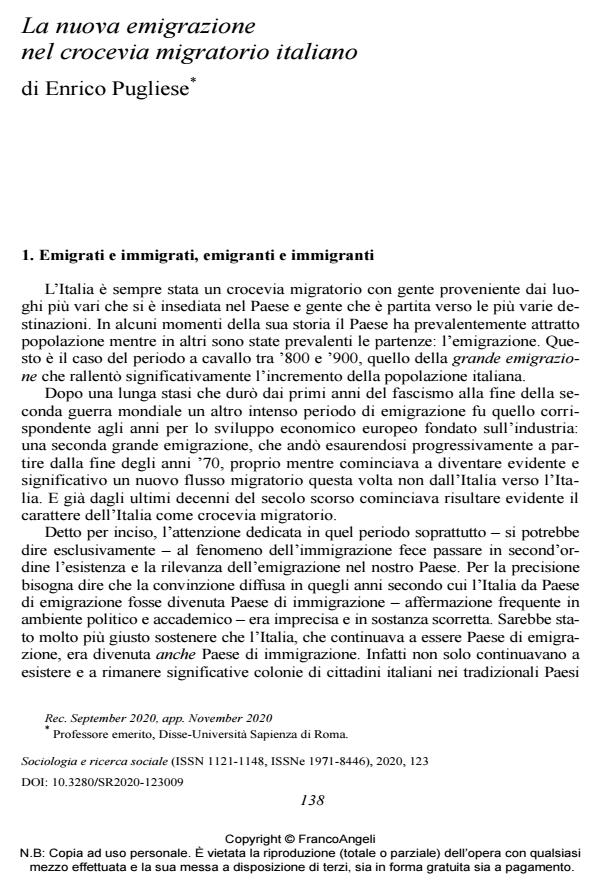La nuova emigrazione nel crocevia migratorio italiano
Titolo Rivista SOCIOLOGIA E RICERCA SOCIALE
Autori/Curatori Enrico Pugliese
Anno di pubblicazione 2020 Fascicolo 2020/123
Lingua Italiano Numero pagine 12 P. 138-149 Dimensione file 212 KB
DOI 10.3280/SR2020-123009
Il DOI è il codice a barre della proprietà intellettuale: per saperne di più
clicca qui
Qui sotto puoi vedere in anteprima la prima pagina di questo articolo.
Se questo articolo ti interessa, lo puoi acquistare (e scaricare in formato pdf) seguendo le facili indicazioni per acquistare il download credit. Acquista Download Credits per scaricare questo Articolo in formato PDF

FrancoAngeli è membro della Publishers International Linking Association, Inc (PILA)associazione indipendente e non profit per facilitare (attraverso i servizi tecnologici implementati da CrossRef.org) l’accesso degli studiosi ai contenuti digitali nelle pubblicazioni professionali e scientifiche
Italy is a true migratory crossroad, with a comparable number of Italian citizens living abroad, and of foreigners living in the peninsula. This decade’s novelty is a renewed emigration from Italy, with very different characteristics from those of post-war intra-European migration. This difference is due to the flow’s social composition (previously proletarian, currently mixed); to the higher level of education (even if only about one fourth are graduates); to a female component moving in autonomy and not as an accompanying family member; to the regional origin not only tied to traditionally poor areas; to the fact that work continues to be the most important motivator, although there are many non-economic reasons. The article illustrates these new features and the factors that determine them.
Enrico Pugliese, La nuova emigrazione nel crocevia migratorio italiano in "SOCIOLOGIA E RICERCA SOCIALE " 123/2020, pp 138-149, DOI: 10.3280/SR2020-123009